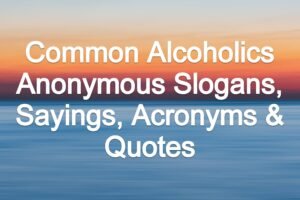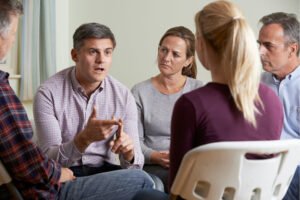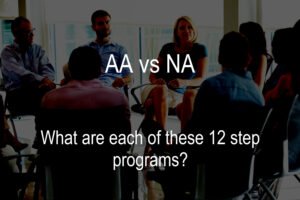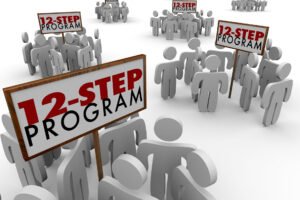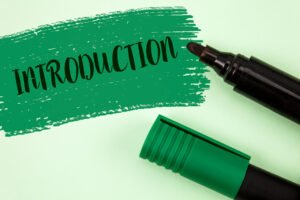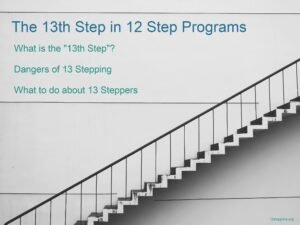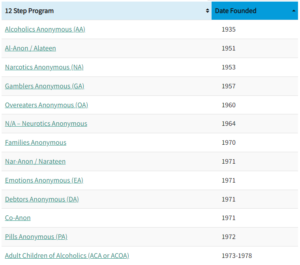Home » 12 Step Programs » 12 Step Program List – A Comprehensive List Of 12 Step Programs & What Each One Is For
12 Step Program List
A Comprehensive List of 12 Step Programs
Which 12-step program is for you? Our goal is to provide information on different 12 step programs whether they’re for addicts themselves or families & friends of addicts. Below, you’ll see a twelve step programThis refers to any official course of treatment for addiction. This could be anything from in-patient facilities, to 12-step programs to harm-reduction programs. More list with a brief synopsis of what each program is about and who it is for.

List of 12-Step Programs for Food Addiction
12-step programs for food addiction, mirroring the approach of Alcoholics AnonymousThe original 12-step fellowship, formed in 1935, to help alcoholics, regain control over their lives. It remains the largest 12-step organization and has contributed to the sobriety of millions worldwide. Read more about Alcoholics Anonymous More, are pivotal in aiding individuals battling food addiction. These programs, central to the 12 step process, underscore the possibility of overcoming addiction through a supportive network, the twelve stepsThe term “12 steps” refers to the core principles of the approach to addiction exemplified by Alcoholics Anonymous and other similar groups. The 12 steps are a set of guidelines designed to help individuals overcome addiction and rebuild their lives. They were created by the founders of Alcoholics A… More, and addressing the accompanying issues of addiction. Not classified as a mental illness, food addiction nonetheless affects the brain similarly to substance abuseThe use of a drug in a quantity that is harmful to the user mentally or physically. Death and serious harm are usually caused by regular abuse rather than the casual use of drugs. More, necessitating a 12 step addiction recoveryThe process by which addicts attempt to break the hold a certain substance or behavior has on their lives. This can refer to participation in a wide variety of methods. What they all have in common, is a sense that life is improving and the addict is regaining control. More process.
In these twelve step programs, members utilize various tools to resist food cravings and behaviors leading to overeating or undereating. Symptoms like loss of control and withdrawalWhen the body gets acclimatized to some habit-forming substances, there can be adverse consequences when they are not consumed regularly. The unpleasant feelings associated with cessation of consumption are notably severe regarding heroin and alcohol. They can even be fatal without the provision of … More are common in food addiction disorder, highlighting the need for a comprehensive 12 step group for addiction.
Membership in any food addiction 12-step group, self-supported through contributions, requires only the desire to cease overeating or undereating. Emphasizing abstinenceThe act of not partaking in the substance or activity to which a member is addicted. The length of sobriety of addicts is determined following the period of abstinence. More from triggerInternal and external cues which when encountered increase the cravings of an addict for the substance or behavior on which they are dependent. This can include a certain smell, place, or person the addict associates with trauma or use. More foods like sugar and flour, these programs don’t propose a diet but rather a sustainable, healthy lifestyle change.
Overall, these 12-step programs for food addiction, part of the broader spectrum of twelve step groups, offer a structured path to recovery, acknowledging the unique challenges of this addiction.
Food Addicts Anonymous (FAA)
Food Addicts Anonymous is a 12-step programA 12 step program includes 12 steps of recovery to help those struggling with substance addictions or behavioral addictions. The 12 steps are also used in programs dedicated to helping loved ones of addicts. 12 step programs include 12 step meetings where members go to share their experience strengt… More that focuses on abstinence from foods with sugar, flour and wheat. There is a food plan in place, not to help members go on a diet, but to help them make permanent healthy lifestyle changes.
Food Addicts in Recovery Anonymous (FA)
Food Addicts in Recovery Anonymous is a 12-step program that defines food addiction as the inability to abstain from certain foods, despite the negative effects it can have on the individual. While many members of the group struggle with overeating, Food Addicts in Recovery Anonymous allows individuals with any symptoms to attend meetings, including purging, undereating, compulsive diet or exercise, obsession with food or weight or depression due to food, weight and body image.
Overeaters Anonymous (OA)
Overeaters Anonymous is a 12 step program for individuals who struggle with compulsive overeating, binge eating, bulimia and anorexia. The program encourages individuals to refrain from compulsive eating behaviors while working towards a healthy body weight by attending meetings and following a plan of eating. A plan of eating offers a daily guide that will help individuals avoid trigger foods and any other destructive eating behaviors.
List of 12 Step Programs for Friends & Families of Addicts
12-step programs offer a vital lifeline not only for addicts but also for their families and friends, recognizing that addiction impacts everyone in the addict’s circle. These programs, an extension of the successful twelve-step model used in groups like Alcoholics Anonymous, provide crucial support for those affected by a loved one’s addiction. Addiction is often seen as a family diseaseSome refer to addiction as a disease, comparing it to physical ailments. There are similarities, as both have a detrimental influence on body and soul and are treatable through medical means. More, where the actions of an addictAn individual with an unhealthy dependence on a substance or behavior. An individual remains an addict even years into recovery and must therefore remain active in recovery. Read more about drug & alcohol addiction & withdrawal at Withdrawal Info. More, whether it’s drugA name for a wide variety of chemical substances capable of altering the function of your mind and body in significant ways. These can include over the counter prescriptions, alcohol, and controlled substances. Most drugs are either physically and/or psychologically habit-forming. More use or alcoholism, can lead to feelings of abandonment and emotional distress in family members.
Recognizing the unique challenges faced by families and friends of addicts, these programs emphasize healthy coping mechanisms, solutions, and the understanding that family members are not responsible for their loved one’s addiction. They offer a safe space for sharing12-step meetings are structured so that member sharing takes up most of the allotted time. It is the bread and butter of the fellowship between members. When sharing, addicts are encouraged to stay on topic and avoid interrupting by engaging in crosstalk. More experiences and emotions, while focusing on personal recovery and spiritual growth.
In these 12 step groups, members learn to deal with their complex feelings and find new ways to cope with the challenges of having a loved one who is an addict. They emphasize that while they cannot control the addiction, they can change their own attitudes and behaviors, focusing on their wellbeing.
Overall, these twelve step programs for friends and family members of addicts form a vital part of the broader 12-step recovery programs, offering a path to healing and understanding for those indirectly affected by addiction.
Adult Children of Alcoholics (ACA or ACOA)
Founded in 1973, Adult Children of Alcoholics is for individuals who have lived in dysfunctional homes as they were growing up. Many of the members have experienced issues such as trauma, neglect and abuse when they were children. Because these painful experiences occurred for many members as children, it has affected the way they deal with certain aspects of their lives today.
In Adult Children of Alcoholics, members are able to grieve their childhood traumas and heal from it, let go of feelings of shameFeelings of shame and inadequacy often contribute both to the onset of addiction and its continuation. Addicts also often commit immoral acts, leading to further shame. This leads to a destructive shame-addiction cycle. Breaking the cycle is one of the keys to recovery. More and abandonment, and eventually, become their own loving parents. The only requirement for membership to Adult Children of Alcoholics is the desire to recover from the effects of growing up in an alcoholicAn individual with an unhealthy dependence on alcohol. From the perspective of AA, it is an individual who has lost control over their life due to an inability to stop drinking. More or otherwise dysfunctional family.
Al-Anon / Alateen
While Alcoholics Anonymous began in the 1930s, Al-AnonA group designed for friends and family of alcoholics. Using the 12-step program as adapted to this purpose, it helps affected individuals deal with the consequences of addiction while supporting the addict in their lives. More was formed in the 1950s for family members of alcoholics to discuss their experiences with alcoholism. Though these individuals were not alcoholics themselves, they shared many stories and problems resulting from a loved one’s drinking, causing them their own emotional and physical distress. Shortly after, AlateenA group established in order to assist younger friends and families of alcoholics deal with the consequences of addiction. It is designed to help youngsters love the addict in their lives without supporting the drinking habit and to remind them that they are not to blame for the situation. More was formed as well, which is a group for teens who have an alcoholic in their life, allowing them to share their stories and struggles with other individuals their age.
Alcoholism is considered a family disease, so the organization focuses on the idea that changed behaviors and ideas can help aid recovery. Family members and loved ones of alcoholics are reminded that it is not their job to stop an alcoholic from drinking, but it is possible for them to find happiness and new methods of coping so that they can improve their own wellbeing and find serenityOne of the goals of recovery in 12-steps and many other formats is the attainment of serenity. It is dissatisfaction and disquiet which often drives addictive and destructive behavior and attaining a level of serenity nips cravings in the bud. In 12-step fellowships, this is often cultivated through… More, whether an alcoholic chooses to seek recovery or not.
More About Al-Anon / Alateen | Visit Al-Anon | Visit Alateen
Co-Anon
Co-Anon is a 12-step program for family members, friends or any loved one of an individual who is addicted to cocaineA strong stimulant developed initially for medical purposes, but now used primarily as a recreational drug. It is an addictive drug; however, it induces mental rather than physical withdrawal symptoms. More and other mind-altering substances. Like any other disease, cocaine addiction negatively affects everyone surrounding the addict. Because many friends and loved ones get caught up in the addict’s behavior, they experience feelings of anger, resentment, guilt and isolation. Addressing these issues is important for family members, whether or not the cocaine addict chooses to seek recovery or not.
In the program of Co-Anon, members are able to find tools for recovery, share experiences and solutions with others affected by cocaine addiction, and make room for their own personal and spiritual growth. Individuals are able to see the role they have played in the addict’s life and how they can apply the steps and traditions to improve their behavior and thinking patterns.
Gam-Anon / Gam-A-Teen
Gam-Anon/Gam-A-Teen was created for individuals who have been affected by a loved one or family member’s compulsive gambling addiction. Individuals are able to meet and share their experiences and tools of recovery with others who are struggling with a friend or family members’ compulsive gambling problem. Gam-A-Teen, like Alateen, is for teens who are affected by a parent or family member’s compulsive gambling problem.
In the program, members are able to build a support system and form trusting relationships with other members, as well as find out how they play a role in a gambler’s life, how they can help the gambler, new methods of coping and dealing with their own fear, anger and resentment. Members are also able to receive financial suggestions, experience positive changes, and find ways to take control of their own lives, despite whether or not the gambler is still active in their addiction.
More About Gam-Anon / Gam-A-Teen | Visit Gam-Anon / Gam-A-Teen PDF Download
Families Anonymous (FA)
Families Anonymous was formed in 1971, specifically for family members dealing with children suffering from addiction. Members of the group can be anybody, including grandparents, siblings, parents, or spouses. The only requirement for membership to Families Anonymous is the concern about the use of mind-altering substances or related behavioral problems of a friend or relative.
Many members struggle with feelings of desperation and loneliness, caused by a loved one’s use of mind-altering substances. In the program of Families Anonymous, individuals are able to find solutions from existing members, receive peer support in addressing their own character defectsWhile working the 12-steps, individuals are encouraged to take inventory of their character defects and ask their Higher Power to remove them. These problematic personality aspects are often associated with unhealthy behavior and hurting others. Defects are not usually caused by the addiction but ma… More, and provide tools of recovery so that they know that they are not alone.
Nar-Anon / Narateen
As Narcotics AnonymousNA is the second-largest 12-step program. Formed in 1953, it is designed to help those who wish to recover from drug addiction. More became more successful in helping individuals recover from drug addiction, Nar-Anon was formed in the 1970s to help the family members and loved ones affected by drug addiction. In Nar-AnonA 12-step organization established to assist the friends and family members of those who are affected by someone else’s drug addiction. It is completely separate from while working in conjunction with the Narcotics Anonymous fellowship. Read more about Nar-Anon and Narateen. More, individuals can begin to see themselves as they are and their role in one’s addiction, as well as change their own attitudes and behaviors, even if the addict in their life is still actively using.
In the program, members are able to discuss their problems with others who deal with the same issues. They are able to understand that addiction is a disease that they cannot control nor can they control anyone else’s life or decisions. Instead, they are able to focus on doing something constructive with their own lives and finding ways to help others without trying to control one’s addiction.
More About Nar-Anon / Narateen | Visit Nar-Anon | Visit Narateen
List of 12 Step Programs for Lifestyle, Behavioral & Emotional
Lifestyle, behavioral, and emotional 12-step programs address a spectrum of compulsive habits and mental health challenges, extending beyond substance addiction. These programs utilize the 12-step format, demonstrating its versatility in aiding various forms of addiction and compulsions. Whether it’s cluttering, codependency, debt, emotional instability, or compulsive gambling, these programs offer a structured approach to recovery, focusing on personal transformation and mental well-being.
Central to these programs is the recognition that different addictions, whether behavioral or emotional, can significantly impact mental, physical, and emotional health. Like Alcoholics Anonymous and other similar groups, these programs provide a supportive community and a set of guiding principles, helping individuals navigate their unique challenges. Membership is open to all who wish to recover from their specific compulsions or behavioral patterns, emphasizing personal responsibility and self-improvement.
In essence, these diverse 12-step programs offer a pathway to recovery for those grappling with non-substance-related addictions, highlighting the adaptability of the 12-step method to various life challenges.
Clutterers Anonymous (CLA)
Clutterers Anonymous is a 12-step program for individuals who are suffering from a cluttering addiction. In many cases, these individuals experience problems in their personal and work life due to their clutter or compulsive cluttering. Before entering the program, many members suffer from depression, isolation, loss of interest in leisure activities and other mental and emotional problems.
In the program, members are able to address the inner problems that cause them to clutter, define their own version of recovery from clutter or hoarding, and use the 12 steps and traditions to guide themselves into a new way and clutter-free lifestyle. Instead of forcing members to make an organizational plan or decluttering plan, the group focuses on helping individuals find the reasons as to why they clutter so that they can begin their own, unique plan for recovery.
More About Clutterers Anonymous | Clutterers Anonymous Website
Co-Dependents Anonymous (CoDA)
Beginning in 1986, Co-Dependents Anonymous is a 12-step program that offers recovery for individuals who have the desire to develop functional and healthy relationship habits. Instead of the group rigidly defining codependency, it allows individuals to decide for themselves if they suffer from codependency – referring to many codependents as individuals who may use others as their sole source of identity or value. Whether individuals were raised in addictive families or dysfunctional one, anyone who wants to recover from codependency is welcome to join the fellowshipThis refers to the members of AA and the bonds of support between them. It is this fellowship that allows addicts to share their stories and accept each other in a world that is not always understanding. More.
Using the 12 steps and 12 traditionsThe term “12 traditions” refers to a set of principles that guide the functioning and decision-making of 12-step recovery organizations such as Alcoholics Anonymous (AA). The traditions were first published in 1946 and are intended to allow the organizations to run smoothly while protecting the anon… More, members of Co-Dependents Anonymous can begin experiencing freedom from self-defeating lifestyles, find ways to recover from traumatic experiences or histories, and begin to mend tumultuous relationships at their own pace.
More About Co-Dependents Anonymous | Co-Dependents Anonymous Website
Debtors Anonymous (DA)
Debtors Anonymous was formed in the 1970s, after several members of Alcoholics Anonymous realized that their financial difficulties may have been the cause of a different kind of mental disease – debting. The program is for individuals who have the desire to stop incurring unsecured debt and want to recover from compulsive debiting. The group encourages members to begin recordkeeping and monitoring all purchases, income and debt payments, to gain a clear understanding of one’s finances.
Action plans and spending plans can be made with some assistance from others members of the group, giving individuals a chance to receive advice from longtime members and focus on efforts to increase their future income. For individuals who may feel they have a problem with compulsive debiting, the official website offers a 15-question survey for them to decide whether Debtors Anonymous is right for them.
Emotions Anonymous (EA)
The organization of Emotions Anonymous was officialized in 1971 for individuals who had the desire to recover from mental and emotional illness. As of 2017, there were over 600 Emotions Anonymous groups worldwide. Emotional and mental illness can cause complete despair in one’s life, so the focus of the group is to address these issues and find a new and improved way of living for each of its members.
Emotions Anonymous does encourage its members to seek out professional therapy, mental health treatmentA blanket term for concentrated efforts to help addicts transition to a healthier life. These can include any of the following (in isolation or combination): therapy, counseling, medication, harm reduction, or moderation. More, or medication if necessary; it is not a substitution for these services. Members in the program are able to find solutions to their problems from other members and receive tools of recovery to help them find new coping methods and handle their issues with depression, anger, fear and more.
Gamblers Anonymous (GA)
Gamblers Anonymous was formed in 1957 by a man who had a successful experience using the 12-step method in Alcoholics Anonymous. The group’s main purpose is to help members recover from their compulsive gambling problems. Once members accept that they have a problem with compulsive gambling and understand that they cannot gamble like other individuals, they can begin working the steps of the program and recover from their addiction.
For many members of Gamblers Anonymous, knowing why they gambled is not necessary. The important characteristics for members in the program to have are the open mindedness and willingness to put forth an honest effort to change the character within themselves. Once members begin working the steps, they can begin living a healthier and happier way of life.
Racists Anonymous (RA)
Although one of the newer groups, founded in 2015, Racists Anonymous focuses on the idea that racism is a mental illness and was created for individuals who want to pull themselves forward and end racism in themselves, then go on to reduce racism in future generations.
The program of Racists Anonymous believes that everyone, in some varying degree, is racist, and it is impossible in American culture to not be racist. Instead of trying to fix oneself, individuals are encouraged to begin self improvement to stop reinforcing prejudices and discrimination taught as the “norm” in American culture. Members of the group can become mindful of these racist patterns in themselves, assess their behaviors and stop perpetuating racism or bigotry in any form.
Underearners Anonymous (UA)
In 2005, Underearners Anonymous was founded for men and women to overcome their problems with underearning. In the program, underearning is defined as not only the inability to provide for oneself financially, but also the inability to utilizes one’s capabilities and competencies. In the program, underearning is considered a mental illness, just as any other addictive disease.
The program provides tools of recovery for individuals to use to help them recover, including written records of how time is spent, discarding items that serve no purpose to be able to provide themselves with what they need, and engage in action meetings to help members remain accountable and receive continuous support.
More About Underearners Anonymous | Underearners Anonymous Website
Workaholics Anonymous (WA)
Founded in the 1980s, Workaholics Anonymous is a 12-step program for individuals who identify themselves as workaholics. While the focus of the program was created for workaholics, it is also intended for individuals who suffer from work procrastination or work aversion. The program is open for anyone who has the desire to stop working compulsively and experiences unmanageability working, including housework, hobbies, fitness and more.
In the program, members can begin creating abstinence plans that help identify bottom line behaviors that lead to overworking or work aversion and learn how to abstain from them. The group also encourages members to take time for themselves and living in the moment instead of focusing on the future.
More About Workaholics Anonymous | Workaholics Anonymous Website
Survivors of Incest Anonymous (SIA)
The organization began in January 1982 when three women had gathered together to discuss the childhood sexual abuse they had experienced, which was done to them by a memberAn individual who attends 12-step program meetings and has the desire to overcome addiction. More of their families. Because they had experience and success with other 12-step groups, such as Alcoholics Anonymous, they decided to utilize the 12-step model to begin healing themselves and moving beyond their histories. From that day forward, they had formed the group of Survivors of Incest Anonymous.
In the program, members can begin their healing process with the help of the 12 steps and through sharing experience with and helping other members. One of the most important things for existing and new members of the program to understand is that they are never alone and what has happened to them in the past is not their fault. The goal of Survivors of Incest Anonymous is to help guide individuals who have survived childhood sexual trauma onto the road of recovery to begin their healing process.
More About Survivors of Incest Anonymous | Survivors of Incest Anonymous Website
List of 12 Step Programs for Sex, Love & Relationships
12-Step programs tailored to address sex, love, and relationship issues offer essential support for individuals grappling with these complex addictions. Unlike substance-related 12-step groups, these programs focus on modifying attitudes and behaviors, often requiring abstinence from certain harmful sexual or romantic behaviors. The essence of these programs lies in aiding members to form healthy, normal relationships and to manage the family illness aspect of sex, love, and relationship addiction.
Members find solace in the shared experiences within these groups, gaining insight into their behaviors and learning to overcome feelings of betrayal, abandonment, and victimhood. Central to these programs is the notion of focusing on self rather than trying to fix or control the addict. Tools like the three-circle diagram help members identify harmful behaviors and establish their personal boundaries towards recovery.
These 12-step fellowships provide a structured approach to confronting and healing from the often-overlooked addictions of sex, love, and relationships, enablingEnabling behavior is any action taken by individuals in the life of an addict, making it easier for them to pursue destructive or addictive behavior. This can include making excuses for the addict, covering for them, or shielding them from the consequences of their actions. More individuals to lead fulfilling lives free from compulsive behaviorsThese are behaviors in engaging in due to a strong urge to do so. Compulsion may be difficult to control but is mostly manageable. If compulsion turns into addiction, the problem becomes more severe. More.
Sex and Love Addicts Anonymous (SLAA)
In the 1970s, a member of Alcoholics Anonymous decided to form the organization Sex and Love Addicts Anonymous, as a way to recover from sex and love addiction. The only requirement for membership is the desire to stop acting out patterns of sex and love addiction.
Although the program does encourage sexual sobrietyIn 12-step programs, an individual is sober when they are no longer partaking in the behavior or substance to which they are addicted and living a better life following the program. Both are necessary to achieve sobriety. More, the willingness to stop acting out in bottom-line addictive behaviors, it also focuses on finding the ability to develop healthy, committed relationships. Individuals in the program can identify their own behaviors that lead to a relapseRelapse in the context of 12-step programs refers to the act of reverting to harmful behaviors associated with addiction after a period of recovery. This return to substance use or compulsive behavior disrupts the recovery process and often leads to a resurgence of destructive patterns that the indi… More or result in mental, physical and emotional stress. Though each member of the program may experience different behaviors, feelings and situations, they can still find some similarities within each others’ stories and start recovering from, what may seem like, a hopeless state of mind.
More About Sex and Love Addicts Anonymous | Sex and Love Addicts Anonymous Website
CoSex and Love Addicts Anonymous (COSLAA)
For CoSex and Love Addicts Anonymous members, the only requirement for membership is the desire to stop living out a pattern of codependency to a sex and love addict. The program is open to anyone who has a sex and love addict in their life. In the fellowship, individuals are able to let go of feelings of betrayal and abandonment and stop seeing themselves as victims. Instead of trying to control and cure a sex and love addict, they learn how to focus on themselves and their own responsibilities.
Offering a safe place for individuals who have been affected by someone’s sexually addictive behaviors, CoSex and Love Addicts Anonymous helps members evaluate their own attitudes and behaviors and helps them begin to find a new way of life.
More About CoSex and Love Addicts Anonymous | CoSex and Love Addicts Anonymous Website
Sex Addicts Anonymous (SAA)
Sex Addicts Anonymous was founded in 1977 and welcomes anyone who has the desire to stop addictive sexual behavior. For many of these individuals, recovery was not possible with willpower and professional help alone. While there is no strict definition of abstinence in the program, members are able to identify for themselves what specific sexual behaviors they need to abstain from. Members can receive help from other members in the program to find what behaviors are addictive and what they may need to abstain from, but it is entirely up to them to make that decision.
In the program, members are encouraged to make a three-circle diagram to help choose what behaviors are harmful and unacceptable; what behaviors lead to acting out; and what behaviors are positive and can enhance their recovery.
More About Sex Addicts Anonymous | Sex Addicts Anonymous Website
Sexaholics Anonymous (SA)
The program of Sexaholics Anonymous was founded as a self-help group available for anyone who has the desire to stop lusting and become sexually sober. Before joining the fellowship, many of these individuals that identify as sexaholics are unable to control themselves and do not have the freedom to stop, as lusting has become an addiction for them. In most cases, sex with anyone, including themselves, is addictive and progressively becomes more and more destructive.
Achieving sobriety in the program is different for every member. For married individuals, it is having no form of sex with anyone other than their spouse. For an unmarried individual, sexual sobriety is freedom from sex of any kind. All individuals in the program, over time, can find recovery over their addiction to lust.
More About Sexaholics Anonymous | Sexaholics Anonymous Website
Sexual Compulsives Anonymous (SCA)
When the program of Sexual Compulsives Anonymous was originally formed, its goal was to target sexual compulsion amongst gay and bisexual men, but since then, the program has adapted and allowed members of any sexual orientation to recover from sexual compulsion. This disease can affect individuals physically, mentally, emotionally and spiritually. Like any other addiction, sexual compulsion can cause a “high” in contemplating and engaging in these behaviors, followed by an emotional letdown.
While the program does emphasize creating a recovery plan to help members abstain from high-risk behaviors, bottom-line behaviors and find what behaviors can support their recovery. Although sobriety is the goal, each member should develop their own definition of sobriety that does not place unreasonable demands on themselves.
More About Sexual Compulsives Anonymous | Sexual Compulsives Anonymous Website
Sexual Recovery Anonymous (SRA)
Like some of the other 12-step programs related to sexual compulsion, Sexual Recovery Anonymous was formed to help individuals recover from sexual addiction. The only requirement for membership to Sexual Recovery Anonymous is the desire to stop compulsive sexual behavior.
In the program, individuals can find a diverse group of people to help offer them solutions and tools of recovery for addressing their problem with compulsive sexual behavior. Sexual sobriety in the program is the end goal for many members, which is defined as the release from any sexual behaviors that are compulsive or destructive. These behaviors can also include masturbation and having sexual relations outside of a committed relationship.
More About Sexual Recovery Anonymous | Sexual Recovery Anonymous Website
List of 12-Step Programs for Substance Abuse
Substance abuse 12-step programs, originating with the establishment of Alcoholics Anonymous in the 1930s, offer vital support for individuals seeking recovery from drug or alcoholAn organic compound used in many products, most notably intoxicating drinks. Alcohol addiction is known as alcoholism. The first 12-step program was devised to deal with that malady. More addiction. Recognized as a disease, addiction is understood as an illness that progressively worsens over time and requires more than just willpower to overcome. These programs, including Narcotics Anonymous and other substance-specific groups like Cocaine Anonymous, HeroinAn opioid used as a recreational drug that is often injected. It has a euphoric effect on the user and is highly addictive both psychologically and physically. It is known for being one of the primary drugs involved in opioid overdoses and for its particularly nasty withdrawal symptoms. More Anonymous, and Crystal Meth Anonymous, follow a similar 12-step format aimed at achieving sobriety.
The core principle of these programs is the admission of powerlessness over addiction, followed by a structured recovery process involving the rest of the 12 steps. These steps guide individuals through a journey of self-examination, correction of character defects, making amends, and maintaining a sober lifestyle. Each program, while addressing different substances, shares the common goal of helping individuals recover from addiction and build strong support systems.
Membership in these programs is free and open to anyone with the desire to stop using drugs or alcohol. The focus is not just on abstaining from substances but also on personal growth and healing, allowing individuals to correct past harms and live healthier, more fulfilling lives.
Alcoholics Anonymous (AA)
Alcoholics Anonymous is a 12-step fellowship that was created for individuals who have the desire to stop drinking alcohol. It was started in the 1930s by two men, Dr. Bob S. and Bill W., who sought out sobriety and realized that discussing their problems with each other helped them stay sober.
While the focus is primarily on alcohol, individuals are also encouraged to stop using other mind-altering substances. The group’s main goal is to help individuals achieve sobriety and share the message with others that recovery is possible. As of 2018, Alcoholics Anonymous was estimated to have over 2 million members and over 100,000 active meetings worldwide.
More About Alcoholics Anonymous (AA) | Alcoholics Anonymous (AA) Website
Cocaine Anonymous (CA)
Cocaine Anonymous was founded in the 1980s to address the specific addiction to cocaine, although it is not solely intended for cocaine addicts only; substance abusers of any kind are welcome to meetings. The only desire for membership to the fellowship is the desire to stop using cocaine or any other mind-altering substances.
Members of Cocaine Anonymous can achieve sobriety by following a 12-step recovery process, which, after achieving sobriety, begins to address some of the problems that addiction can cause in someone’s life. While many members of Cocaine Anonymous had nowhere left to turn before the program, many of them are able to find peace of mind and serenity once they begin attending meetings and working the steps of the program.
More About Cocaine Anonymous (CA) | Cocaine Anonymous (CA) Website
Crystal Meth Anonymous (CMA)
Crystal Meth Anonymous was developed in the early 1990s to help individuals recover from their addiction to crystal meth. The program focuses on abstinence not only from crystal meth, but also from alcohol, inhalants and other drugs that are not taken as prescribed. Although crystal meth addiction is specified in the group’s name, the fellowship welcomes anyone who has a problem with drugs and has the desire to stop using.
The group provides members an adapted version of the 12 steps to begin their recovery process. Once sobriety has been achieved, members are encouraged to work the rest of the steps to improve other aspects of their lives.
More About Crystal Meth Anonymous (CMA) | Crystal Meth Anonymous (CMA) Website
Heroin Anonymous (HA)
Following the same format as Alcoholics Anonymous, Heroin Anonymous began in 2004 as a result of there being no program specified for recovering heroin addicts. Although the program does promote the same idea, abstinence from all drugs and alcohol, the founders believed that individuals addicted to heroin could relate on a more personal level with others who have experienced heroin addiction.
The goal of the program is to help individuals achieve sobriety and allow members to continue sharing their stories of experience, strength and hope with others to show them that recovery from heroin addiction is possible. Over the course of its life, Heroin Anonymous has grown extensively and has meetings and active members worldwide.
More About Heroin Anonymous (HA) | Heroin Anonymous (HA) Website
Marijuana Anonymous (MA)
MarijuanaThis psychoactive drug from the Cannabis plant is perhaps the most common recreational drug in the world. It has strong medicinal benefits but can also cause physical harm and psychological dependence. Marijuana has a much lower social stigma than in the past and is now legal in many countries and U… More Anonymous is another 12-step program for individuals who want to recover from marijuana addiction. Although there are many arguments against whether or not marijuana is addictive, individuals are encouraged to make their own decision as to whether or not they have crossed the line from using to addiction.
Members of Marijuana Anonymous are individuals who struggle with marijuana controlling their lives and they live around getting it, using it and finding any way to stay high. Formed in the late 1980s, the group focuses on the abstinence of marijuana in order to lead a happier and healthier life, although it does recommend that its members examine their other drug and alcohol use, which may also need to be ceased in order to fully recover.
More About Marijuana Anonymous (MA) | Marijuana Anonymous (MA) Website
Narcotics Anonymous (NA)
Shortly after Alcoholics Anonymous began, a man named Jimmy K. brought the idea of Narcotics Anonymous to light and it became an official organization in 1953. The group was created for anyone who was struggling with drug addiction. While the group had a slow take-off during its time, as it was difficult for the fellowship to find places to meet, it is now the second largest 12-step program in the world. Today, the group holds over 60,000 meetings weekly and it’s available in over 130 countries worldwide.
For members of Narcotics Anonymous, there is no distinction between drugs and alcohol; both are to be abstained from in the program. Members who make an effort to work the steps and regularly attend meetings have achieved sobriety in the program and their goal is to help others recover from drug addiction as well.
More About Narcotics Anonymous (NA) | Narcotics Anonymous (NA) Website
Nicotine Anonymous (NicA)
Nicotine Anonymous, a 12-step program that was made official in the 1980s, was formed for individuals who had the desire to quit smoking and live free of nicotineA stimulant naturally produced and present in tobacco. It is highly addictive and therefore one of the most problematic elements associated with smoking. It can be used in gum and patches to aid addicts in withdrawal from smoking. Read more about the 12 step program for nicotine addiction called Nic… More. After seeing the success of the 12 steps in Alcoholics Anonymous, several nicotine addicts felt they could utilize the same recovery process to gain relief from their nicotine addiction.
Nicotine addiction is as severe as any other addiction, so in the program, individuals can learn how to abstain from nicotine one day at a time. Living nicotine-free can help members not only live healthier lives, but they can improve their minds and emotions as well.
More About Nicotine Anonymous (NicA) | Nicotine Anonymous (NicA) Website
Pills Anonymous (PA)
Beginning in the early 1970s, Pills Anonymous was developed and modeled after Alcoholics Anonymous, using a 12-step recovery format. The only requirement for membership to the fellowship is the desire to stop using pills. Individuals are encouraged to not only abstain from pills, but to also abstain from any mood or mind-altering substances, including alcohol.
With the many negative feelings that go hand-in-hand with pill addiction, members who work their program with effort, rigorous honesty and open-mindedness can achieve sobriety and help others do the same. The organization has grown over the years and has thousands of members in several countries worldwide.
More About Pills Anonymous (PA) | Pills Anonymous (PA) Website


